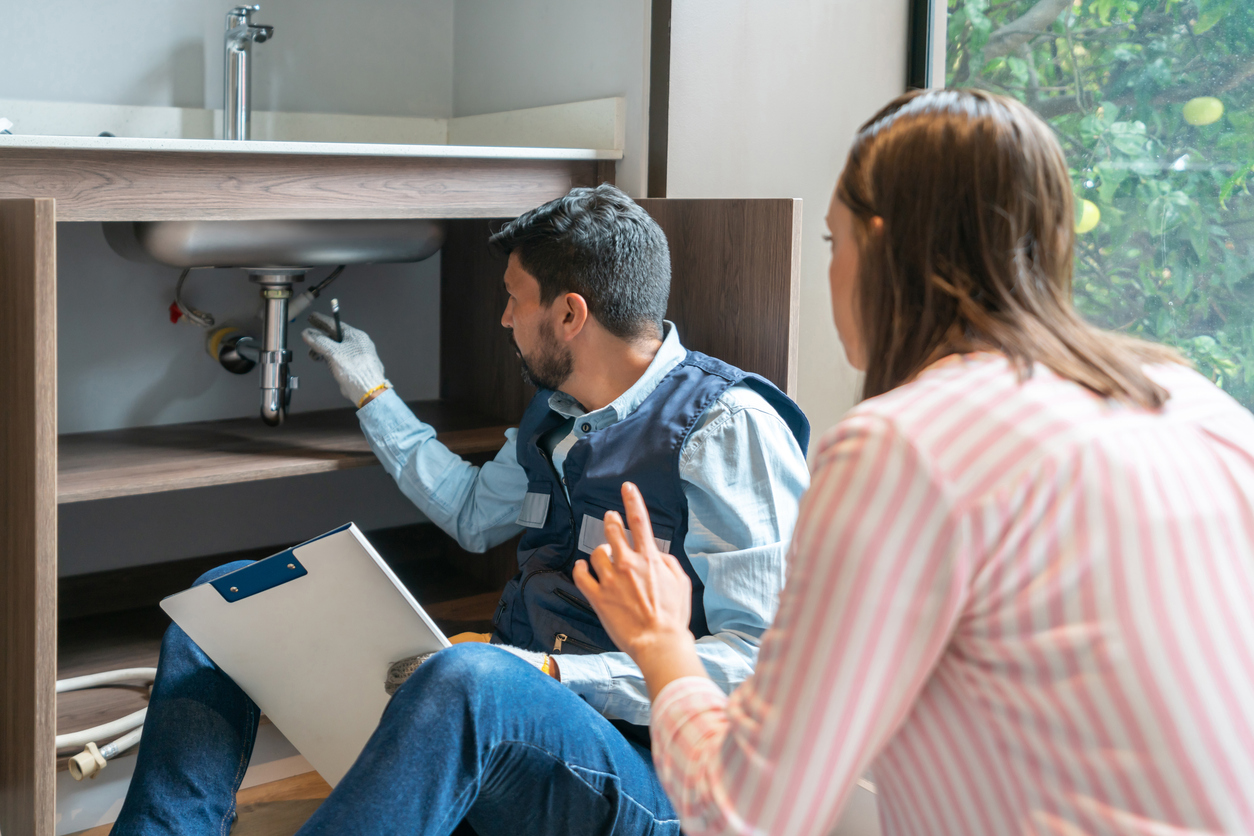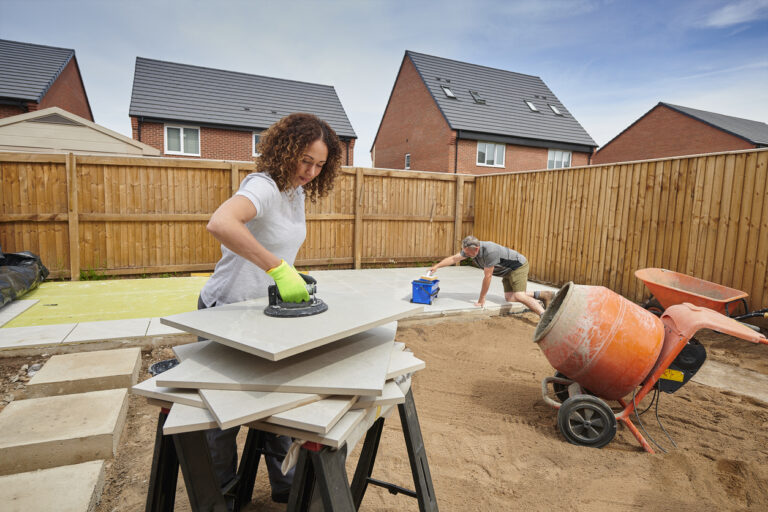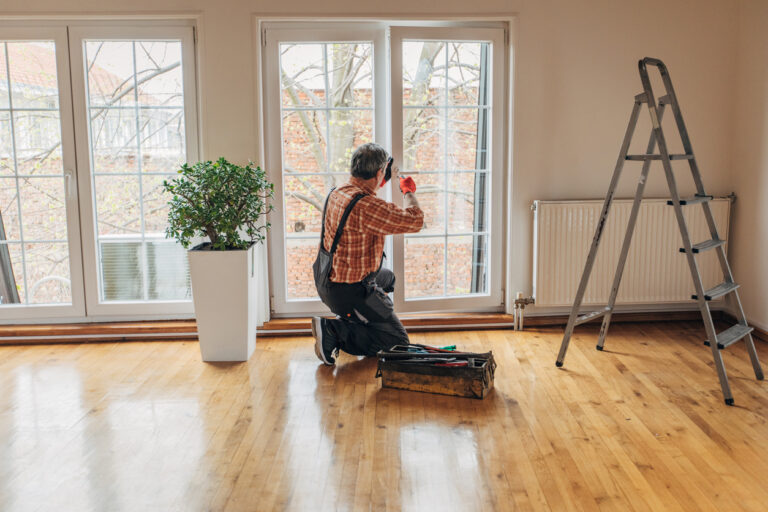Key takeaways
- Taking care of necessary home repairs now can lead to significant savings of money, time and hassle.
- There are several options for financing much needed home repairs. Home equity can be a good source of funds, through loans or a no-loan home equity agreement.
Owning your own home offers plenty of advantages, like stability, privacy, freedom, the chance to build equity and a sense of accomplishment. It also comes with the challenges of taking good care of your house.
Yet some studies show that up to 60% of homeowners are putting off necessary repairs or maintenance tasks. The danger is that this can lead to much more damage, bigger problems and higher costs. While any item in need of repair is worth tackling, we’ve compiled a list of the home repairs you should never ignore and should address as soon as possible.
Water from internal sources
When it comes to home maintenance, water can be the enemy. For starters, don’t ignore drips from faucets. They may seem minor but will eventually stain your sink or rust out the drain assembly – which can lead to ruined cabinets and floors.
Similarly, a non-working drain can lead to overflows, and ruined cabinets and floors – along with an odor that can permeate your entire home.
If you have a toilet that’s backing up or not flushing properly, pay attention. Water can seep through the wax ring of the toilet and destroy the floor and the structure underneath. These issues could also be suggestive of sewer issues. Don’t ignore a toilet that runs, either. The cost of letting it run over a couple of months will be far more than the cost of fixing it right away.
A water spot on a ceiling or wall means moisture could be entering your house. The ultimate problem could be a leaky roof or pipe, which will get larger and may eventually ruin floors, walls and furniture. In some areas of the country, it can also lead to mold.
Water from external sources
If you find any water coming in through the basement, ceilings, windows or doors, you need to figure out the cause – which could be anything from roofing problems or pests to the need for more caulking or gutter capacity. Then you can tackle the necessary repair.
Peeling caulk, especially in older houses, can be a sign of water trouble, too. When caulk around doors, windows, edges or roofs peels and starts to fail, water can ruin exterior siding or paint. It can also seep into the interior of the home.
Sump pump malfunction
Many homes with basements have sump pumps, which take water away from the foundation of a house. Simply put, a perimeter drain around outside of the house directs excess water into a pit in the basement. When that pit starts to get full, the pump ejects the water away from the house. If the sump pump stops working, or does not work properly, the basement can flood quickly.
Electrical issues
Electrical problems can lead to catastrophic fires and injuries. Treat any electrical problem as one that needs attention immediately.
Outlets that don’t work, breakers that trip frequently and lights that flicker are all issues that can quickly lead to big (and expensive) repairs. You may be overtaxing your electrical system in some way, you could have a loose wire or failing wiring system, or you could simply need to tighten a loose lightbulb. And when it comes to lightbulbs, be sure to replace them as needed, wherever they are in your home. Failure to do so – for example, replacing the hard-to-reach one in a stairwell – can lead to safety issues and falls.
Railings
If any part of a railing is broken or wobbly, it will not support weight. Anyone can easily lose balance and fall, leading to a host of potential health and medical issues and expenses.
Decks experiencing any movement
Every deck is attached to the house. At that point, if the rim joint of the deck starts to pull away from the house, the deck becomes unstable and you’ll notice a gap. This problem happens frequently, and unless attended to, the deck will collapse in its entirety.
Cracks
Cracks in concrete are normal. But cracks in foundation walls or floors that are starting to displace could be a sign of structural or drainage issues. If you spot small cracks, inside or outside your home, note their size and check periodically for changes.
Smoke alarms, carbon monoxide detectors, radon detectors
Replacing batteries on a regular basis goes in the maintenance, versus repair, category. But it’s worth repeating: Do not just unplug these alarms and detectors if they begin chirping. Be prepared with the right batteries so you can replace them immediately.
How to pay for your home repairs
While being proactive can ultimately save you a great deal of money, home repairs can still be expensive. To pay for home repairs, consider these options.
- Savings. Ideally, you will plan ahead, saving each month to create a reserve for home repairs.
- Personal loan. Banks, credit unions and independent lenders offer personal loans, typically up to $50,000, although some have higher limits. You will need to repay the money you borrow over a set period, usually between 24 months and 60 months, with interest. In addition, most lenders charge origination fees of about 2%-7% of the amount borrowed. There also may be late fees and prepayment fees (if you pay off the loan early). Each lender is different, so it’s important to understand all costs before making a decision. Qualification for a personal loan is based on your credit profile. In general, the higher your credit score, the lower the interest rate you’ll receive. Lenders also will look at your debt-to-income ratio to see how well you manage debts.
- Home equity loan (HEL) or home equity line of credit (HELOC). Using home equity can be a good way to finance needed home repairs. A HEL and a HELOC, as their names state, are loans. With an HEL, you’ll receive the total amount you borrow up front. This loan has a fixed interest rate that will not change over the entire term, so your monthly payments will not change. In contrast, a HELOC lets you draw money as you need, up to the limit the lender has set. The interest rate is usually variable, although some fixed-rate HELOCs are available. You’ll pay interest on the amount drawn. With both an HEL and a HELOC, you can usually borrow 80%-85% of your home’s value, minus what you owe on it. Both use your home as collateral, so if you miss payments, you risk foreclosure and losing your home.
- Home equity agreement (HEA). An HEA can provide the funds you need to take care of essential home repairs without adding to credit card debt or the burden of a loan. With an HEA, you’ll receive cash up front in exchange for a portion of the future value of your home. With Unlock’s HEA, you can buy back your equity at any time during the 10-year agreement term. For many people, that happens when they sell their home. HEA qualification can be easier than loan options; income requirements are flexible, and there are no monthly debt payments and no interest rates to worry about.
The bottom line is that not all home repairs are created equal. Some need attention sooner than later, or you risk bigger issues and bigger expenditures. Fortunately, you have a number of options to help pay for them, including an HEA. See how much you can qualify for today.



